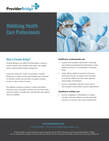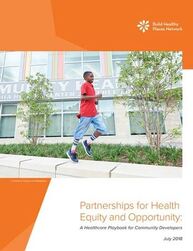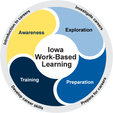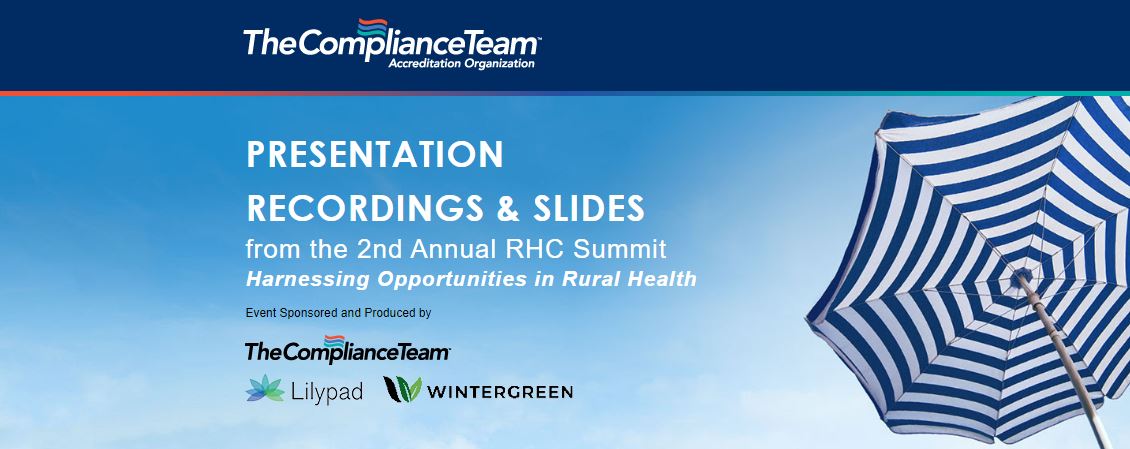Impact Wellbeing Campaign
The National Institute for Occupational Safety and Health’s (NIOSH) Impact Wellbeing™ campaign gives hospital leaders evidence-informed solutions to:
- Reduce healthcare worker burnout
- Sustain wellbeing
- Build a system where healthcare workers thrive
Applying for Grants to Support Rural Health ProjectsThis guidance can serve as a starting point for those who need assistance to begin the grant writing process. It covers tips on searching for rural-specific funding, grant proposal preparation, building successful funding relationships, and planning for program sustainability.
|
Black Maternal Health ToolkitThese resources are meant to provide quick actionable information to help pregnant people and their families make informed decisions about pregnancy, birthing health, and postpartum.
|
Rural Primary Care Institute (On-Demand)Tailored specifically for State Offices of Rural Health and their partners and stakeholders, NOSORH’s Rural Primary Care Institute – On-Demand equips participants with the tools to deliver effective technical assistance to rural primary care providers.
|
Rural Health Insights for Each State & Congressional District
Stroudwater Associates, in partnership with the National Rural Healthcare Association (NRHA) and the National Organization of State Offices of Rural Health (NOSORH), has developed an integrated data visualization dashboard of healthcare infrastructure, workforce, outcomes, and status metrics.
National Rural Health Resource Center Releases New Population Health Toolkit
The National Rural Health Resource Center's recently updated Population Health Toolkit — which includes the newest population health data from a half-dozen publicly available data sets — is now available online.
Online Resource for Licensure of Occupational Therapists, Physical Therapists, Psychologists, and Social Workers.The site provides up-to-date information on emergency regulation and licensing in each state.
|
Iowa Workforce Development Interactive Dashboards The Iowa Workforce Development is a great resource for labor force data, statistics, and research on Iowa's labor pool and economy.
|
RuralGME Technical Assistance Center |
Iowa Department of Education
|
Provider Bridge
|
Find Hospital Reports on Iowa Hospital Association's Interactive Dashboard |

Provider Bridge is an online tool that makes it easier to connect health care providers with health care entities during national public health emergencies.
|
Health Resources and Services Administration Workforce Projections Tool
This interactive tool projects the future supply of and demand for healthcare occupations.
You can:
You can:
- View projection of the supply of and demand for health care workers at the state and national level
- Analyze supply and demand trends by discipline
- Analyze projected ‘What if?’ scenarios in the event of changes in the health care landscape
Rural Health: Addressing Barriers to Care Infographic
This infographic presents data on rural versus urban health disparities and barriers to healthcare in rural America.
Center for Rural Health Releases Communication Toolkit
|
A Primer for Multi-Sector Health Partnerships in Rural Areas and Small Cities |
|
The Center for Rural Health (CRH), housed within the University of North Dakota School of Medicine & Health Sciences, recently updated its Communication Toolkit. The toolkit is designed to help Critical Access Hospitals, Rural Health Clinics, public health departments, and other healthcare organizations in navigating the realm of communications. It has sections on communicating with a target audience, working with the media, and how to successfully use tools, such as social media and website analytics, to share information with the public. The toolkit is free and open to the public. Marketing coordinators, public relations directors, social media marketers, communication managers, foundation directors, website specialists, and other similar positions can find helpful tips and advice in the toolkit.
|
Check out this tool to guide cross-sector collaborations between the community development, finance, public health, and healthcare sectors to support partnerships in rural areas and small cities.
The resource offers a brief introduction to the roles that different sectors play in community health and well being in rural areas and small cities, and the opportunities that cross-sector partnerships can offer in creating conditions that support health. Included is a mini-tool box of resources to help facilitate cross-sector collaboration that fosters investments that suppot better health outcomes in rural communities and small cities. |
Healthcare Playbook for Community Developers
This resource guides community developers toward partnerships with hospitals and healthcare systems. Gain practical advice on navigating the vast healthcare ecosystem with your organizational assets in mind.
|
Health Resources and Services Administration Nursing Workforce DashboardThis interactive tool visualizes data from the 2018 National Sample Survey of Registered Nurses (NSSRN), which includes detailed information on the nursing workforce in the United States.
You can:
|
Webinars, Podcasts, and More
The Rural Library and Health Cooperative Agreement Program: A New Chapter in Rural Healthcare Access
If Americans Respect Nurses So Much, Why Do We Treat Them So Badly?
Webinar Recording Available: Rural Healthy People 2030 - Charting a Course for Rural Health Over the Next Decade
|
Rural Healthy People 2030 is a companion to the federal Healthy People 2030 program designed to set health promotion and disease prevention goals for the United States over the next decade. Relying on data from a national survey of rural stakeholders, Rural Healthy People 2030 works to identify the most important Healthy People priorities for rural America, as identified by rural stakeholders, for the current decade.
|
|
Helping Community Health Workers Succeed: Ideas From an Innovative Program
|
Experts praise community health workers as the keys to building a more equitable and fair health care system in America. Is there a way to unlock more success for hiring and retaining them?
|
|
2023 Health Workforce Research Symposium: Addressing Health Workforce Shortages Now & In the Future
|
On October 11th, HWTAC hosted the 2023 Health Workforce Research Symposium at the National Press Club in Washington, DC. The streaming component—which included Sessions 1 and 2—is now available to watch on demand.
|
|
"Help Wanted: Trends and Strategies for Iowa's Workforce"
Treating Rural America Docuseries
|
|
Rural Health Leadership Radio
|
Essential: Iowa's EMS emergency
|
|
Over the past ten years, over 100 rural hospitals have closed their doors. Roughly one in three rural hospitals have been identified "at risk". If there was ever a need for strong leadership, that time is now. Rural Health Leadership Radio provides a forum for conversations, learning, and research to assist rural health leaders in becoming more effective leaders. We provide a forum for rural health leaders to discuss and share what ideas are working, what is not working, lessons learned, success stories, strategies, things to avoid, and anything else relating to rural health leadership.
|
This is an eight-part KCCI investigation into emergency medical services in Iowa. It spans from families who dialed 911 only to wait or not see an EMT at all, to the staffing shortage across the state, to departments closing across Iowa.
|
Podcast: Chidinma Ibe on Community Health Workers' Chance to Advance Public Health Policy |
Health Affairs' Editor-in-Chief Alan Weil interviews Johns Hopkins University School of Medicine's Chidinma Ibe on her recent paper that provides a closer understanding of the value of community health workers' (CHW) voices, social risk factors, and how structural racism shapes CHWs' approach to intervention delivery in structurally vulnerable communities.
|
A Conversation with the Student Association for Rural Health
Rural Health Leadership, with Steve Simonin
Webinar Recording Available: How Does the Definition of "Rural" Impact Research?
The United States Census Bureau (Census) and the Office of Management and Budget (OMB) each have their own definition of "rural." However, both Census and OMB definitions present measurement challenges, with the Census overcounting the number of people in rural areas while the OMB undercounts them. To overcome these measurement challenges, the Federal Office of Rural Health Policy (FORHP) incorporates Rural-Urban Commuting Area codes to create a more nuanced definition of "rural."
During this webinar, Dr. Janice Probst and Dr. George Pink will share recent research from the FORHP-funded Rural Health Research Centers to highlight the importance of rural definitions and how those definitions impact research. Our presenters will provide advice for "What should I take into account when determining rural definitions for my research study?" and "As a non-researcher, what should I look for in rural definitions when reading a study or brief?"
During this webinar, Dr. Janice Probst and Dr. George Pink will share recent research from the FORHP-funded Rural Health Research Centers to highlight the importance of rural definitions and how those definitions impact research. Our presenters will provide advice for "What should I take into account when determining rural definitions for my research study?" and "As a non-researcher, what should I look for in rural definitions when reading a study or brief?"
Brookings Institution's Reimagine Rural, a podcast featuring rural towns experiencing positive change |
While the dominant narrative regarding rural America is one of decline and division, “Reimagine Rural” is a new podcast that visits rural towns across the United States that are experiencing positive change and explores how public investment in rural people and places can lead to increased and equitable prosperity.
|
Webinar Recording Available: Ambulance Deserts - Geographic Disparities in the Provision of Ambulance Services
Access to timely ambulance service is an essential part of the emergency medical system. Yet ambulance access varies widely with significant gaps across the country. During this webinar, Dr. Yvonne Jonk, from the Maine Rural Health Research Center, presented key findings from a new chartbook that analyzes 41 states in 2021-2022 and identifies places and people that are more than 25 minutes from an ambulance station, also called an ambulance desert (AD). The chartbook presents data on ADs by state and county. Included are maps of AD locations and healthcare facility locations for every state with available data.
Presentations
|
The Rural Landscape
|
A View from the Hill:
DC Rural Health Policy Update |
Staff Recruitment and Retention
|
Friend or Foe?
What does Telehealth Mean for Rural? |
State Offices of Rural Health:
Assistance, Connection, & Moving the Power of Rural Forward |



